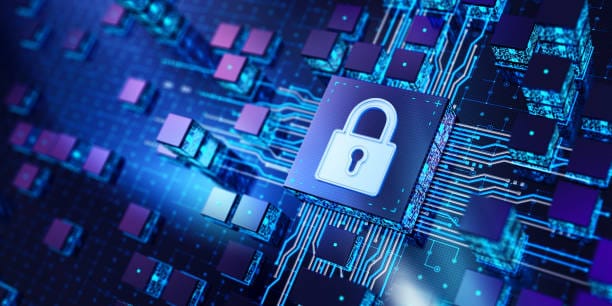Picture this: it’s a quiet Tuesday morning. The coffee machine hums in the corner, your email inbox is slowly filling, and your team is settling into their daily rhythm. You open your laptop, ready to approve a payment for a vendor, only to find that your system is locked. A black screen stares back at you with a simple, chilling message:
“Your files are encrypted. Pay $50,000 in Bitcoin to regain access.”
For many small business owners, this nightmare isn’t fiction. It’s the reality of today’s digital landscape. Once upon a time, cyberattacks were a distant threat — the kind of problem you imagined happening to big corporations with deep pockets and massive IT departments. But times have changed. Hackers have discovered something crucial: small businesses are often the soft underbelly of the economy. They hold valuable data, process payments, and store customer information, but they rarely have the sophisticated defenses of larger enterprises.
Cybercrime is no longer a lone teenager in a basement poking at your website. It’s a sprawling industry worth billions, run by organized criminal networks that operate with ruthless efficiency. Their motives range from stealing credit card details to holding your entire database hostage. And their favorite prey? The small business that thinks it’s too small to be noticed.
The truth is, in today’s interconnected economy, every business is a digital business — and that means every business is a potential target. Whether you run a boutique marketing agency, a small retail shop, or a family-owned manufacturing company, your systems and data are part of the global network. The moment you connect to the internet, you’ve stepped onto a battlefield.
This doesn’t mean you should live in fear, peering nervously at every incoming email. It does mean, however, that you need a strategy — one built on smart, sustainable, and well-executed cybersecurity practices that protect your livelihood without crippling your operations. And while there are countless technical solutions out there, we’re going to focus on five foundational practices that can transform your business from an easy target into a fortress.
Building the Human Firewall: Employee Training as Your First Line of Defense
Cybersecurity, for all its talk of firewalls, encryption, and intrusion detection systems, is ultimately about people. Studies have shown that over 80% of cyber incidents involve human error — an employee clicking a malicious link, using a weak password, or accidentally sending sensitive information to the wrong recipient. Technology can do a lot, but it can’t stop an untrained person from opening the wrong email attachment.
The concept of the human firewall is simple: if your people are educated, alert, and proactive, they become your strongest defense. If they’re careless or unaware, they can be your biggest vulnerability.
Imagine this scenario. An employee named Sarah receives an email that looks like it’s from your accountant. It has your company logo, uses the accountant’s name, and even references a real invoice number. The email asks her to “urgently review” an attached document. In reality, the email is from a cybercriminal, and the attachment contains ransomware. If Sarah has been trained to recognize phishing attempts — noticing the slightly misspelled domain name, the odd urgency, the unexpected attachment — she’ll flag it to IT. If not, she might open it, and within minutes, your systems could be compromised.
Building a strong human firewall involves:
- Regular training sessions that keep employees informed about common threats like phishing, spear-phishing, social engineering, and business email compromise.
- Simulated phishing campaigns to test and reinforce training, helping staff learn from safe mistakes.
- Clear policies for reporting suspicious activity quickly, without fear of punishment.
But training is more than just information dumps and dull PowerPoint slides. The best programs engage employees with real-world stories, interactive exercises, and clear, memorable takeaways. When employees understand the “why” behind security protocols, they’re far more likely to follow them.
Cybersecurity awareness should be part of your company culture — not an afterthought. Praise employees for spotting threats. Share new scam tactics in team meetings. Make vigilance a point of pride. In the end, a well-trained employee doesn’t just protect your business; they protect themselves, their families, and your customers.
Locking the Gates: Strong Authentication and Access Control
Imagine your business as a castle. The walls are high, the moat is wide, and the guards are well-armed. But what if the drawbridge is always down, and the keys to the front gate are lying in the grass? That’s what it’s like when you rely solely on simple usernames and passwords for access to your systems.
Passwords are one of the oldest security tools in the digital world — and also one of the most abused. Too many employees use weak passwords like “123456” or “password1,” and even strong passwords can be stolen through phishing or data breaches. Once an attacker has a valid password, they can often walk right into your systems without triggering alarms.
The solution is layered authentication and careful control over who can access what. This is where multi-factor authentication (MFA) and access management come in.
MFA requires users to prove their identity in more than one way: something they know (a password), something they have (a phone or security token), or something they are (a fingerprint or face scan). This simple step can stop the vast majority of account takeover attempts — even if the password is compromised.
Access control is about limiting exposure. Not every employee needs access to every system. A marketing assistant doesn’t need administrative rights to the payroll system. By following the principle of least privilege, you ensure that if one account is compromised, the damage is contained.
And access control isn’t just about keeping outsiders out. It’s also about monitoring what legitimate users are doing. Insider threats — whether malicious or accidental — can be just as dangerous as external attacks. Good systems log access attempts, track changes, and flag unusual activity.
If the human firewall is about making sure your guards are alert, strong authentication and access control are about making sure the gates are locked — and that the keys are only in trusted hands.
The Shield in the Cloud: Secure Data Backup and Recovery
Even the best defenses can be breached. A determined attacker, a natural disaster, or even a simple equipment failure can wipe out your data. For a small business, the loss of customer records, financial information, or operational files can be devastating — sometimes even fatal.
This is why secure, reliable data backup isn’t optional. It’s the safety net that ensures you can recover from an attack without losing everything. The key is to back up not just your files, but your entire system in a way that allows for quick restoration.
The 3-2-1 backup strategy is a gold standard:
- Keep three copies of your data (the original plus two backups).
- Store backups on two different types of media (such as a local server and cloud storage).
- Keep one copy offsite (cloud-based or in a secure physical location) to protect against disasters like fire or flooding.
But backups are useless if they’re never tested. Too many businesses discover too late that their backups were corrupted, incomplete, or impossible to restore. Schedule regular test recoveries to ensure your process works under pressure.
For cybersecurity specifically, backups are your lifeline in a ransomware attack. If your systems are encrypted and you have clean, recent backups, you can restore your data without paying a ransom. This robs cybercriminals of their leverage and gets you back in business faster.
Cloud-based solutions have made enterprise-level backup tools affordable for small businesses. Just be sure your cloud provider encrypts data both in transit and at rest, and that they comply with any industry-specific regulations you must follow.
Think of backups as the emergency exits in your digital building. You hope you never need them — but when the fire alarm sounds, you’ll be grateful they’re there.
Fortifying the Walls: Keeping Systems and Software Updated
In the digital world, vulnerabilities are like cracks in a fortress wall. They may be small, but to an attacker, they’re open invitations. The longer they go unpatched, the greater the risk. This is why keeping your operating systems, applications, and security tools updated is one of the simplest — and most overlooked — cybersecurity practices.
Software developers regularly release updates to fix security flaws that could be exploited by hackers. But here’s the catch: the moment an update is released, the details of the vulnerability often become public. This means cybercriminals can quickly create tools to exploit businesses that are slow to apply the patch.
For small businesses, patch management can feel overwhelming. You may have dozens of devices, each running different software. But the cost of neglect is high. The 2017 WannaCry ransomware outbreak, for example, infected hundreds of thousands of systems worldwide — many of them because organizations hadn’t applied a security patch that had been available for months.
Automation can help. Many operating systems and security tools can be set to update automatically. For more complex environments, patch management software can track and deploy updates across your network.
But updates aren’t just about security. They also improve performance, fix bugs, and add features that can help your business run more smoothly. Treat them as part of your regular maintenance — like changing the oil in your car — rather than an afterthought.
A fortress with strong walls is hard to breach. Regular updates keep those walls solid, closing off entry points before attackers can slip through.
Watching the Horizon: Continuous Monitoring and Incident Response
The reality of cybersecurity is that no defense is perfect. Even with strong training, locked-down access, solid backups, and regular updates, there’s always a chance something will slip through. That’s why continuous monitoring and a solid incident response plan are critical.
Continuous monitoring means keeping an eye on your systems in real time, looking for signs of trouble: unusual network traffic, failed login attempts, unexpected configuration changes. Many small businesses assume this kind of vigilance is beyond their reach, but affordable tools now exist that can alert you to suspicious activity before it becomes a full-blown crisis.
Incident response is about what happens next. If you detect a breach, what do you do? Who do you call? How do you contain the damage? A good incident response plan lays out clear steps for different scenarios: isolating infected systems, notifying stakeholders, preserving evidence, and recovering operations.
Time is everything in a cyber incident. The faster you respond, the less damage you suffer. Without a plan, precious hours can be wasted in confusion — and in the digital realm, hours can mean thousands of lost records, millions in damages, or the permanent loss of customer trust.
Monitoring and response are like a watchtower and a fire brigade. The watchtower spots trouble early; the fire brigade acts fast to put it out. Together, they keep your business from burning to the ground.
The Mindset of Resilience
Cybersecurity for small businesses isn’t about building an impenetrable wall and hoping nothing gets through. It’s about creating layers of defense that work together: trained employees, controlled access, secure backups, timely updates, and vigilant monitoring. It’s about accepting that threats are part of the digital landscape and preparing to face them with confidence.
Most importantly, it’s about culture. When security becomes part of how your business operates every day — when employees see it as a shared responsibility rather than a chore — you create an environment where cybercriminals find no easy targets.
The good news is that you don’t have to do it all at once, and you don’t have to break the bank. Many of the most effective practices cost little more than time, discipline, and commitment. Over time, they pay dividends not just in preventing attacks, but in building trust with your customers, partners, and employees.
Your business may be small, but your defenses can be mighty. In an age when the line between the physical and digital worlds is fading, the effort you put into cybersecurity today could be the difference between thriving and becoming another cautionary tale.





